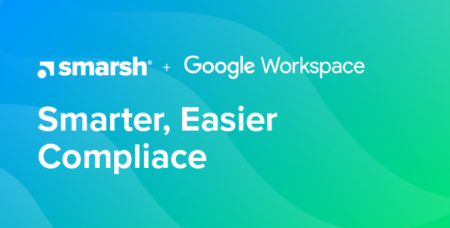How IT Can Enable ‘Work From Anywhere’ and Prepare for the Future of Electronic Communications
The drive to use mobile applications and other collaboration tools for business can be costly and complex for technical teams in financial services. Each new tool requires detailed analysis by IT, legal and compliance teams to be securely and compliantly onboarded and to ensure that the same levels of business continuity, application availability and functionality are supported. Designs for high availability, disaster recovery, application and business workflows must all be thoroughly planned, tested and implemented along with employee training and onboarding.
Embracing the challenges of collaboration tools
Because of these hurdles and costs, IT has been hamstrung by budget and resource constraints and forced to say no to requests for new communications channels. The pandemic only exacerbated the problem. Now that remote work is widely practiced, this has become an even larger issue as employees and clients demand more and more options for communication.
"Users are asking us for 10 or 15 tools — some of those tools for just one or two meetings — which has been a challenge while we're trying to simplify the tools our internal customers use."
Employees are also driving the push for flexible work options, and many employers are listening. In a survey by PWC, almost 70% of financial services companies expect more than half of their employees to work from home at least once a week going forward. IT teams may not have a choice when it comes to enabling the latest communication channels. Tools like Zoom, Slack and Teams are non-discretionary as companies have depended on them for business continuity throughout the pandemic. And these types of platforms continue to evolve.
Better to embrace the challenge of enabling these tools than to risk losing employees or customers because of an inability to communicate with them on their preferred channels.
The problem: outdated technology and infrastructure
Unfortunately, existing processes, procedures and technology are getting in the way of enabling the latest communication tools. Behavior and content on newer platforms are different than email. The data generated is more complex and multi-faceted, incorporating various modes of communication, e.g., audio/video, chat, document collaboration, activities, in-line replies, emojis, etc.
This complexity, combined with an increase in volume and variety of data makes it more difficult to capture and render communications in a readable way and then route them through supervision, surveillance or e-discovery. Each new application functionality opens a potential Pandora’s box of ways to enable nefarious behavior or create additional pathways for people to circumvent existing tools, processes and procedures.
Nearly all legacy solutions and the infrastructure on which they sit are not equipped for these challenges, making it difficult for IT and compliance teams to support regulatory and business initiatives.
The solution: a modern, elastic, cloud-native archive
To keep up with evolving electronic communication demands and exponential data growth, it’s critical for large financial organizations to implement future-proof systems with robust, cloud-based solutions for capturing, preserving, supervising and producing large volumes and types of communications content. Context must be preserved to efficiently weave together conversations that take place across platforms and devices to make it easy for end-users to quickly understand the real meaning behind the content they are reviewing.
A modern, elastic, cloud-native archive provides the ability to scale as business needs demand and offers future-proof extensibility to connect with new content channels as remote work continues to reign. Businesses require these products to work reliably across all global regions with no downtime, with high-availability and disaster recovery functionality out of the box, to give enterprises peace of mind that they are meeting global regulatory requirements and requests at all times and on short notice. The expectation from business today is that RTO and RPO will be zero.
Additional competitive advantages
There are additional benefits to moving to a modern, cloud-native archiving platform. In addition to addressing compliance needs, modern archiving solutions can:
- Improve communications governance and e-discovery
- Cut IT costs and enhance resource utilization
- Deliver key business insights captured from a complex set of content sources
- Enable additional business opportunities with access to new audiences
- Drive additional revenue growth by reaching customers where they want to be contacted
- Enhance customer support and drive down response times with faster collaboration
- Implement new features, security upgrades and other enhancements on a continuous basis with no downtime to the environment or application functionality
The move to a modern, enterprise-grade archiving and supervision solution is an opportunity to not only manage risk but to leverage that data for actionable business insights. Solutions that natively incorporate AI, machine learning and natural language processing capabilities can shine a light on information that drives innovation and efficiency. These advanced capabilities enable a successful work-from-anywhere future through technology and allow for better, more informed business decisions — providing a competitive advantage over organizations still using antiquated technology.
This blog is part of an ongoing series for IT in financial services. Next up, how to protect customer and employee data.
Share this post!
Smarsh Blog
Our internal subject matter experts and our network of external industry experts are featured with insights into the technology and industry trends that affect your electronic communications compliance initiatives. Sign up to benefit from their deep understanding, tips and best practices regarding how your company can manage compliance risk while unlocking the business value of your communications data.





Subscribe to the Smarsh Blog Digest
Subscribe to receive a monthly digest of articles exploring regulatory updates, news, trends and best practices in electronic communications capture and archiving.
Smarsh handles information you submit to Smarsh in accordance with its Privacy Policy. By clicking "submit", you consent to Smarsh processing your information and storing it in accordance with the Privacy Policy and agree to receive communications from Smarsh and its third-party partners regarding products and services that may be of interest to you. You may withdraw your consent at any time by emailing privacy@smarsh.com.
FOLLOW US